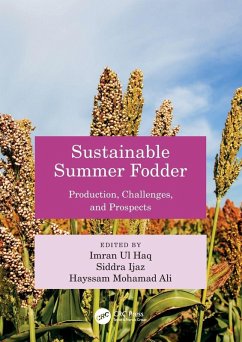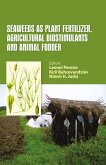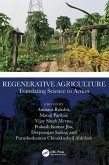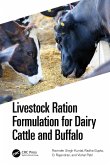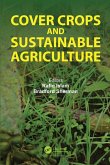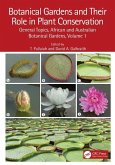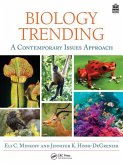Increasing human population pressure, especially in developing countries, indicates a massive increase in the consumption of livestock products. Fodder crops are the primary and cheapest source of feed for livestock, but feed shortages or poor-quality fodder are particular constraints to the world's livestock sector. These shortages affect milk production, adult and calf health, calving rates, and livestock numbers. Summer crops including cereal, legume, grass, and tree fodder, provide an economical source of nutrients suitable for animal health as well as improve their breeding efficiency.
Sustainable Summer Fodder: Production, Challenges, and Prospects presents the unique opportunities and difficulties of supportable cultivation and growth of summer fodder crops and the various methods for enabling crop preservation. It details conventional modern approaches to sustainable production and advanced molecular approaches to develop high-yielding fodder crops.
FEATURES
Contains information on cultivation, growth, productivity, and protection from pests and diseases of various summer fodder cropsPresents approaches to sustainable production, summarizes fodder preservation methods; and details molecular approaches to develop high-yielding fodder cropsProvides insights into agronomic aspects of cereal, legume, grass, and tree species cultivated as summer fodder worldwideDiscusses the trends in insect pests and diseases, their field identification, and various control methods
This book is an essential resource for agronomists, horticulturalists, livestock farmers and practitioners, and students working in the field.
Sustainable Summer Fodder: Production, Challenges, and Prospects presents the unique opportunities and difficulties of supportable cultivation and growth of summer fodder crops and the various methods for enabling crop preservation. It details conventional modern approaches to sustainable production and advanced molecular approaches to develop high-yielding fodder crops.
FEATURES
Contains information on cultivation, growth, productivity, and protection from pests and diseases of various summer fodder cropsPresents approaches to sustainable production, summarizes fodder preservation methods; and details molecular approaches to develop high-yielding fodder cropsProvides insights into agronomic aspects of cereal, legume, grass, and tree species cultivated as summer fodder worldwideDiscusses the trends in insect pests and diseases, their field identification, and various control methods
This book is an essential resource for agronomists, horticulturalists, livestock farmers and practitioners, and students working in the field.

